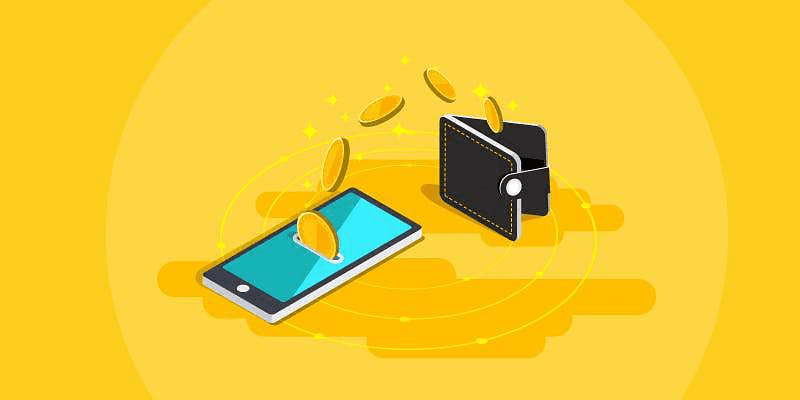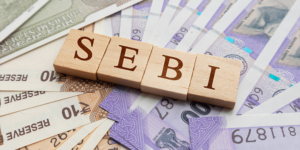
As the ‘wallet wars’ intensified in recent months, the buzz around virtual wallets is gaining prominence, indicating their increasing significance within the fintech ecosystem. Juniper Research’s report predicts that by 2026, around 60 per cent of the global population will embrace digital wallets, projecting the e-wallet market to potentially surpass the USD 429.2 billion mark by 2027.
Also known as e-wallets, digital wallets comprise applications like Apple Pay, Google Pay, and Samsung Pay. These convenient tools enable seamless payments directly from your phone or smartwatch, eliminating the need to rummage through your purse or fiddle with your physical wallet. Moreover, they offer a secure means of conducting transactions through your phone. Additionally, for digital businesses engaging in virtual gatherings and accepting payments, the absence of an e-wallet feature could mean missed opportunities.
As the payment landscape diversifies, the question arises: can virtual wallets assert themselves as dominant players? How do you go about setting up your digital wallet, and how do you determine which one suits your needs best? Read on to uncover the insights you need.

What is a digital/e-wallet?
A digital wallet, also known as an electronic wallet, operates as a secure financial transaction application accessible on connected devices. It retains payment information and passwords within the cloud. While accessible through computers, mobile wallets represent a subset primarily designed for use on mobile devices.
These digital wallets securely hold debit card, credit card, or bank account details for seamless online transactions, safeguarded by a password. They streamline your shopping experience by enabling payments via your device, eliminating the need to carry physical cards.
An e-wallet comprises two primary components–software and information. While the software segment ensures data security and encryption, housing personal details, the information section stores user-provided data like shipping addresses, names, payment methods, and more.
Moreover, digital wallets are versatile and can store an array of items including groceries, flight tickets, membership cards, gift cards, coupons, loyalty cards, event tickets, hotel reservations, identification cards, driver’s licenses, and even car keys.
Types of e-wallets
There are three distinct types of digital wallets:
Closed wallets
This type is created by companies offering products or services as these wallets limit transactions to the issuer or other users of the same wallet. The features of closed wallets include:
- Restricted payments outside the wallet’s issuer’s network
- Transactions cancelled or refunded return the amount to the wallet
Examples– Ola Money, Amazon Pay, MakeMyTrip, Clear Trip, and BookMyShow.
Semi-closed wallets
This type allows transactions both online and offline at designated merchants upon an onboarding agreement. The features of semi-closed wallets include:
- Allow purchases and payments to identified service providers (e.g., Ola, Uber)
- Limited usage at merchants in agreement with the wallet issuer
- Facilitation of various transactions and services
Examples–Paytm, PhonePe, MobiKwik.
Open wallets
This type of wallet is issued by banks or partnered institutions, much like semi-closed wallets but permits ATM withdrawals. The features of open wallets include:
- Flexibility for transactions, including fund transfers
- Online and in-store payments are enabled globally, contingent upon sender and receiver accounts within the same application
- Withdrawal at select ATMs allowed
Examples– ICICI Pocket, M-Pesa by Vodafone Idea.
How does a digital wallet function?
Digital wallets utilise a mobile device’s wireless capabilities, including WiFi, Bluetooth, and magnetic signals, to securely transmit payment data from your device to a point of sale designed for such communication.
These technologies can listed as follows:
QR Codes
Matrix barcodes are scanned by your device’s camera to initiate payments. These codes, a part of digital wallets, enable secure payment transactions.
Near Field Communication (NFC)
NFC powers contactless payments by enabling devices (like smartwatches and smartphones) and some credit cards to securely transmit payment information to readers and terminals without physical contact. It relies on electromagnetic signals for connectivity.
Magnetic Secure Transmission (MST)
MST emulates the magnetic stripe on credit and debit cards. MST-equipped digital wallets transmit encrypted payment data to card readers when held or tapped close to the reader (within a few centimetres).
Samsung Pay previously employed this technology but has phased it out in some Android mobile phones.
When initiating a transaction using a digital wallet, the selected card information is transmitted from your device to the point-of-sale terminal. The terminal, connected to payment processors, channels this information through credit card networks, banks, gateways, and other involved third parties to authorise and complete the payment.
.thumbnailWrapper
width:6.62rem !important;
.alsoReadTitleImage
min-width: 81px !important;
min-height: 81px !important;
.alsoReadMainTitleText
font-size: 14px !important;
line-height: 20px !important;
.alsoReadHeadText
font-size: 24px !important;
line-height: 20px !important;

Benefits of using e-wallet
Enhanced security
Digital wallets offer robust security measures, utilising encryption software that protects your information from potential breaches.
Unlike physical wallets susceptible to theft, digital wallets use tokenised transactions, safeguarding your actual card details. Even if a cyberattack occurs at a store, your private data remains protected.
Password protection and biometric authentication further fortify digital wallet security. Plus, no minimum balance is required, allowing users to add funds as needed.
Effortless convenience
While not universally accepted yet, the majority of merchants and e-commerce platforms have embraced digital transactions, promising a future trend. Using your e-wallet streamlines transactions, offering speed and security.
It can be used anytime, anywhere, requiring only a smartphone, internet connection, and a linked bank account.
Cost-effective
Transitioning to digital wallets incurs no charges for most transactions, saving you money in the long run. Plus, you get cashback and coupons on certain cases. The author herself got a 1799 INR bag at 1299 INR availing a Google Pay coupon. Amazing, right?
Drawbacks of using e-wallet
Despite the many benefits, there are a few drawbacks to note:
Limited acceptance
Not all merchants may accept this payment method, restricting its universal usage.
Dependency on technology and charge
E-wallets rely on Bluetooth or WiFi availability and necessitate a charged device for operation.
Security Issues
Digital wallets are susceptible to identity theft or fraud if your mobile device is stolen, unprotected, or compromised by hacking.
Leading digital wallets
The ideal digital wallet for you depends on your specific requirements, location, and smartphone preference. While Apple Pay is seamlessly integrated with iPhones, Google Pay caters to Android users. Here’s a breakdown of some leading digital wallets in the fin-tech world.
Apple Pay
Apple Pay ensures secure payments using Touch or Face ID for streamlined security measures. Apple boasts that Apple Pay “works with most credit and debit cards from nearly all U.S. banks.” That’s close to statistics as over 3,700 listed participating banks are included under its hat.
It further collaborates with Goldman Sachs, expanding its services to include Apple credit cards.
Google Pay
Utilising NFC technology, Google Pay encrypts card information for secure transactions via fingerprint or password. Widely accepted by millions of merchants, it requires an NFC-enabled Android device running Lollipop 5.0 or higher for usage.
Additionally, Google Pay allows users to add and utilise funds for in-store and online payments.
Samsung Pay
Exclusive to Samsung devices, Samsung Pay incorporates MST and NFC technology, supporting various credit/debit cards from over 1,000 banks.
Besides cards, it accommodates membership and gift cards for seamless transactions at numerous outlets.
Amazon Pay
Backed by Amazon’s global presence in e-commerce, Amazon Pay emerges as a popular digital wallet option.
PayPal
Integration with N26 Mastercard allows single-tap checkouts anywhere PayPal is accepted, enhancing convenience for users.
Some other notable digital wallets–
- Vodafone M-PESA
- Vodafone M-PESA
- Venmo
- Walmart Pay
- Dwolla
Are digital wallets safe?
Digital wallets employ robust encryption, safeguarding your payment details within your passcode-protected smartphone. Plus, fingerprint authentication, two-factor authentication or one-time PINs, further fortifies their security.
Still, it’s important to safeguard your passwords, monitor accounts for unusual activity, and ensure your device has the option to be remotely disabled if lost or stolen. When selecting a digital wallet, ensure that it provides top-tier venture capitalist backing or compliance with anti-money laundering policies. Unsatisfactory responses to critical questions should prompt consideration of other options.
Pro tip: Remember to always cover your phone screen while entering passcodes in public spaces.



![Read more about the article [Morning Quote] “What doesn’t kill you, makes you stronger.”](https://blog.digitalsevaa.com/wp-content/uploads/2023/04/Imagecadu-1681420475635-300x150.jpg)



![Read more about the article [Funding alert] Healthtech startup Truemeds raises $22M in Series B led by Westbridge Capital](https://blog.digitalsevaa.com/wp-content/uploads/2022/04/Truemedsfinal-1650949608104-300x150.png)


